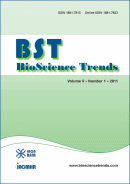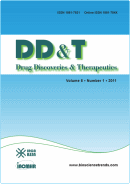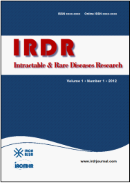BioScience Trends. 2008;2(3):178-187. (DOI: )
Immune response against cell-wall skeleton of Mycobacterium bovis BCG at the inoculation site and peripheral lymphoid organs.
Kashiwazaki Y, Murata M, Fujii T, Nakagawa M, Fukushima A, Chiba N, Azuma I, Yamaoka T
We reported in the previous paper that highly purified cell-wall skeleton of M. bovis BCG (SMP-105) eliminated lymph node metastases and primary implanted tumor, presumably by generating tumor immunity, employing guinea pigs. In this paper, we investigated the immune reactions to elucidate the mechanisms of antitumor activity. Twenty-four hours after intradermal injection, inflammatory cells were seen migrating to the inoculation site. Massive infiltrations of lymphocytes were observed on day 7, when a large amount of SMP-105 was still observed in the dermis. Several chemokines attracting neutrophils and monocytes, detected by TaqMan RT-PCR, were induced rapidly and declined 72 h post-injection, but most increased again on day 7, consistent with the pathological findings of lymphocyte infiltration. Activation of lymph node cells was investigated using mice. Upon stimulation by SMP-105 in vitro, the draining lymph node cells collected from mice treated with SMP-105 produced interferon-? (IFN-?), whereas, lymph node cells did not release IFN-? when prepared from mice treated with OK-432. This evidence prompted us to assume that SMP-105 functioned as T cell antigens. Intracellular cytokine analysis demonstrated that IFN-? was mainly attributable to CD4







